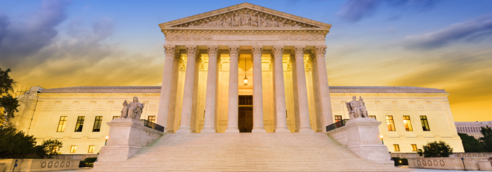Overview
By exploring the impacts of the reversal of the Chevron deference, students will examine the connection between economics, public policy, and human progress and its effects on sustainable systems for the environment. The Chevron U.S.A., Inc. v. Natural Resources Defense Council, Inc. Supreme Court case is not limited to environmental policy regulation. Still, it uncovers the interdependent relationship of markets and policy decisions, which consequentially affects environmental science as a whole. Through text and data analysis paired with Socratic discussion, students will be able to synthesize the outcomes of the Supreme Court’s ruling and evaluate—through a viewpoint‐diverse lens—their impact on environmental sustainability.
This lesson aligns with Advanced Placement Environmental Science Unit 9: Global Change and highlights the intersection between 2 of the 4 big ideas explored in the course regarding sustainability and interactions between different species and the environment. The lesson is also suitable for economics, government, or other advanced subjects to help students identify interdisciplinary connections.
Objectives
- Define regulation and explain how the legislative and executive branches implement it
- Analyze text to gather evidence to support claims about how the government regulates environmental policy
- Evaluate and discuss the intended and unintended consequences of the 2024 Supreme Court case Loper Bright Enterprises v. Raimondo, which overturned the Chevron deference on the environment
Vocabulary
- Regulation
- Chevron deference (also referred to as the Chevron doctrine)
- Competitive advantage
- Public policy
- Environmental policy vs. energy policy
- Federal agencies
Materials
- Chevron U.S.A., Inc. v. Natural Resources Defense Council, Inc. (1984) from the National Constitution Center (printed or digital for prework)
- Chevron U.S.A. Inc. v. Natural Resources Defense Council, Inc. court case description from Oyez (printed or digital for prework)
- “The US Supreme Court’s Chevron Deference Ruling Will Disrupt Climate Policy” from Council on Foreign Relations (printed or digital for lesson activity)
- “Why the Chevron Victory Won’t End the Administrative Abuse Coming from the EPA” from the Cato Institute (printed or digital for lesson activity)
- “Around the Halls: After Chevron, What’s Next?” from Brookings (printed or digital for lesson activity)
- “Study Finds Economic Prosperity Is Associated with a Cleaner Environment” from Human Progress (printed or digital for lesson activity)
- “Assessing the Economic Impacts of Environmental Policies” from the Organization for Economic Co‐operation and Development (printed or digital for lesson activity)
- Prework graphic organizer
- Know, want to know, learned (KWL) chart
- Lesson graphic organizer
- Sticky notes (optional; can be replaced with a digital version)
- Laptops and internet
- Pencils/pens and highlighters (optional for the articles)
